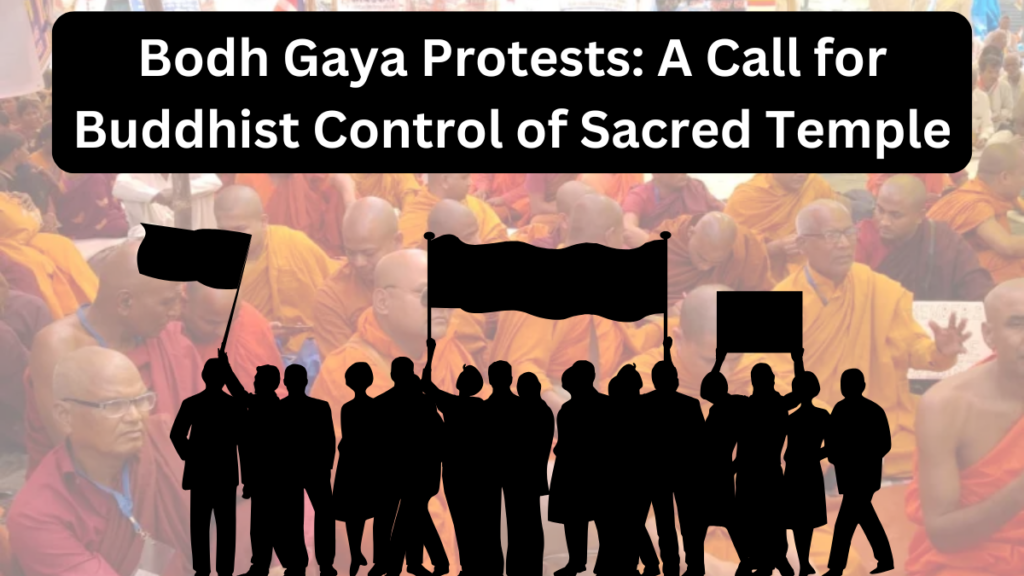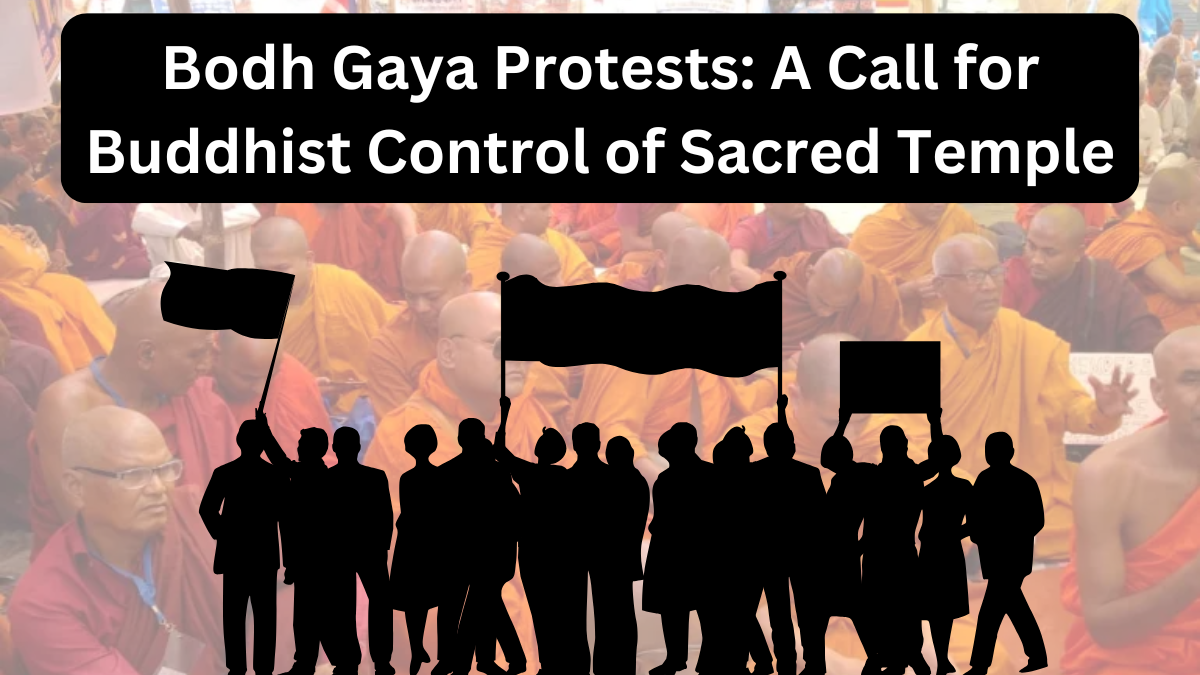As Abhishek Bauddh stood in a queue outside a makeshift tent kitchen in Bodh Gaya, a small town in Bihar, India, he couldn’t help but reflect on the crowds of people surrounding him. Bodh Gaya, the site where Lord Buddha attained enlightenment, has been the destination for pilgrims for centuries, but this time, something was different. Bauddh, who has visited the site since he was 15, noted that the atmosphere was unlike anything he had ever witnessed.

The Protest Taking Shape
-
A Unified Protest: Buddhists from all over India are gathering in Bodh Gaya not just for a pilgrimage, but to partake in a growing protest.
-
The Issue at Hand: The protest is centered around a demand to transfer the control of the Mahabodhi Temple, one of Buddhism’s most sacred shrines, entirely to the Buddhist community.
Over the past few weeks, Buddhist organizations have held rallies across India, from Ladakh in the north to Mumbai in the west and Mysuru in the south. According to Akash Lama, General Secretary of the All India Buddhist Forum (AIBF), the campaign is gaining momentum, with more people arriving in Bodh Gaya to join the protest. India is home to around 8.4 million Buddhists, according to the 2011 census, and their voices are now louder than ever.
The History of Control
For 76 years, the Mahabodhi Temple has been managed by an eight-member committee comprising four Hindus and four Buddhists, as outlined in the Bodh Gaya Temple Act of 1949. However, the current protests are calling for a repeal of this law, arguing that the Hindu community’s growing influence over the temple rituals is not in line with Buddhist principles.
The Buddhist Standpoint:
-
A Need for Change: Protesters, including monks in saffron robes, are demanding full control over the temple. They believe the current arrangement distorts the essence of Buddhism.
-
Grievances over Rituals: They argue that Hindu rituals performed at the temple contradict the Buddha’s teachings, as the Buddha was opposed to Vedic practices.
In contrast, the Bodh Gaya Math, a Hindu monastery that oversees these rituals, claims to have played a crucial role in the upkeep of the temple for centuries. They argue that they are within their legal rights to manage the site.
Rising Tensions
The Heart of the Protest:
-
The Law at the Center: The Bodh Gaya Temple Act of 1949 is the legal basis for the management structure, and protesters are calling for its repeal.
-
Peaceful Protests: As protesters continue to demand justice, some have even gone on hunger strikes to draw attention to their cause.
Bauddh, a protester from Chhattisgarh, explained, “Buddhists have not received justice so far. What should we do if not protest peacefully?”
The Role of History in Shaping the Conflict
The Mahabodhi Temple has a long and complex history of ownership. Built by Emperor Ashoka in 260 BCE, the temple has seen various periods of neglect and restoration. Its management shifted over time, and by the 16th century, it came under Hindu control.
-
Turmoil and Recovery: The temple was abandoned after the 13th-century invasions, but later came under Hindu supervision when Ghamandi Giri, a Hindu monk, established the Bodh Gaya Math in 1590.
-
Buddhist Reclamation Efforts: In the late 19th century, Buddhist monks began movements to reclaim the site. However, it wasn’t until the 1949 law that control was shared between Hindus and Buddhists, with protests for full Buddhist control intensifying in recent years.
The Hindu Response
Swami Vivekananda Giri, the head of the Bodh Gaya Math, remains steadfast in his position, calling the protests “politically motivated.” He argues that the Math has always treated Buddhist visitors as equals and points out that the current committee arrangement includes four Buddhist members.
Giri’s Perspective:
-
Historical Ownership: Giri asserts that the Hindu community has historically cared for the temple and that they have every right to continue doing so.
-
Generosity in Management: He emphasizes that the Math has been generous by including Buddhists in the management committee.
However, Akash Lama of the AIBF believes that the ongoing government and legal inaction is a sign that Buddhists’ rights continue to be ignored. “We have been disappointed by the government and the Supreme Court,” Lama stated.
Key Moments in the Protest
-
The Hunger Strike: The protests reached a new level of intensity in February 2023 when over two dozen Buddhist monks sat on a hunger strike for 14 days.
-
Police Intervention: The monks were forcibly removed by police, which sparked further outrage and intensified the protest.
The Bigger Picture: A Religious and Political Struggle
The Bodh Gaya protests reflect a deeper, ongoing struggle over the representation and control of sacred religious sites in India. The issue is not just about one temple but a larger fight over identity, heritage, and the role of religious minorities in India.
FAQs
1. Why is there a protest at Bodh Gaya? The protest is centered around a demand for the full control of the Mahabodhi Temple to be handed over to the Buddhist community. The protesters argue that the current management, shared with Hindus, is disrespecting Buddhist values and rituals.
2. What is the Bodh Gaya Temple Act of 1949? The Bodh Gaya Temple Act of 1949 is a Bihar state law that established a joint management committee of Hindus and Buddhists for the temple. Protesters are calling for its repeal to grant sole control to the Buddhist community.
3. Who is involved in the protests? The protests are being led by various Buddhist organizations and monks, including the All India Buddhist Forum (AIBF). Devotees from different parts of India, including Ladakh, Mumbai, and Gujarat, have joined the protests in Bodh Gaya.
4. What is the history of the Mahabodhi Temple? The Mahabodhi Temple was built by Emperor Ashoka in 260 BCE. It has gone through various phases of Hindu and Buddhist control, with the current dispute over the temple’s management being a result of the 1949 Bodh Gaya Temple Act.
Click here to learn more
Sachin is a dedicated writer specializing in education, career, and recruitment topics, delivering clear and actionable insights to empower readers.
